Kakadu & Top End
Kakadu Super Circle No. 1
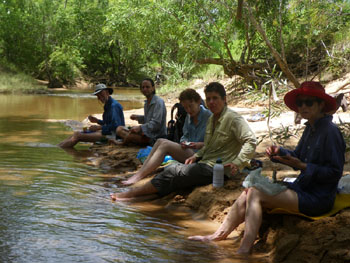
- The only ground tour anyone offers that takes you to Jim Jim Falls in the wet season.
- The only way to see many wonderful creeks, gorges and Aboriginal art sites hidden deep within the heart of Kakadu.
- Our most strenuous Kakadu expedition . It will be hot and humid but you can always cool off with a swim.
- Get in soon! While we have special permission to have a helicopter food drop for this trip, we have been told there is no guarantee we can do it again.
The pictures tell the story. Compare the dry season cascades (left) with the same cascades in the wet season (centre). If that's too wet, you can often dry out in a rock shelter as at right.
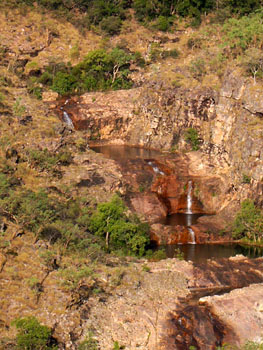
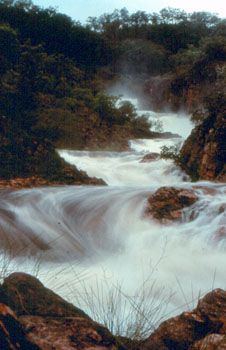
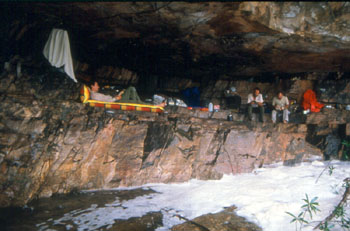
|
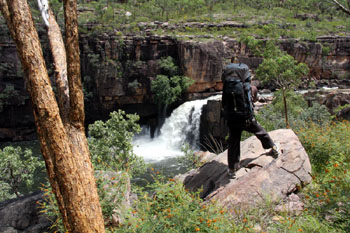
Our walk begins in southern Kakadu and takes us through spectacular Koolpin Gorge with its many waterfalls and Aboriginal art sites. From Koolpin we cross a plain and walk through two low passes. Just before the second, there is a sudden change in vegetation as we enter a monsoon rainforest. Generally restricted to small gorges such as the one through which we are passing, these forests offer deep shade and a flora totally different to that of the open plains.
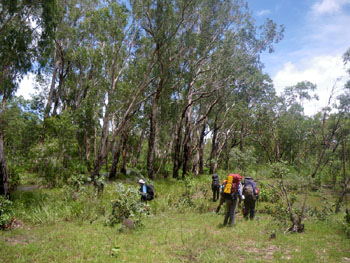
Next comes Twin Falls Creek where we head upstream into a mixture of sandy flats, paperbark forest and broken rock outcrops, many of which hide major Aboriginal art sites. Picture yourself sitting in a rock shelter, studying the art then turning around to watch the rain come down, imagining how it must have been for those who called this region home for so many thousands of years.
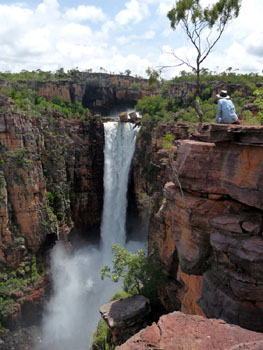
From Twin Falls Creek, we cross over to the upper reaches of Jim Jim Creek and head for Jim Jim Falls, the highest waterfall in Kakadu. With the creek in flood, the view from the top is awesome. From Jim Jim, we move to the Amphitheatre Falls on Twin Falls Creek, another truly specatcular sight.
We then cross the plateau to the top of Graveside Gorge where a twin waterfall drops 100 metres into a pool in the gorge below passing through the largest patch of open country rainforest in the park on the way. Next comes Cascades Creek (photos at the beginning of this page) where a series of pools and drops can turn into a single mass of white water after a storm.
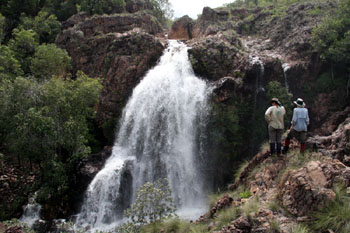
More crossing between watersheds brings us to Barramundi Creek with its many waterfalls. We follow Barramundi downstream and return to the main road along a 4WD track, closed to vehicles for the season. The trip finishes with a night at the Cooinda resort and a morning wetlands cruise allowing you to experience a very different environment, where the isolated billabongs of the dry season expand to cover something like 1000 square km.
Terrain and difficulty. This is the most strenuous trip we offer in Kakadu, one of the most strenuous trips in our entire program.
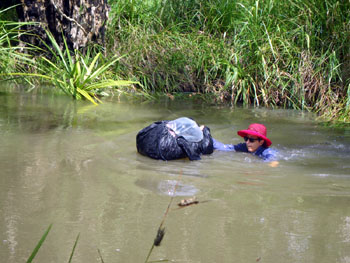
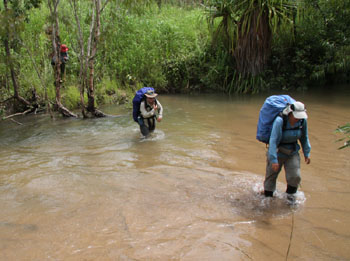
If you take part, you will get wet when it rains and you will get wet crossing creeks.
You are, however, not likely to get cold. The temperature is unlikely to go below about 21°C (70°F).
Once you start, you are in to the finish. There is no vehicular access anywhere along the route.
Some sections of the walk are fairly flat and relatively easy. Others involve considerable rock hopping and are moderately difficult. There are a few steep climbs but these are short and over relatively quickly for most groups.
To take part you need above average fitness, the ability to swim and a sense of adventure. We have a food drop in sealed metal drums at the halfway point so you do not need to carry food for the full three weeks.
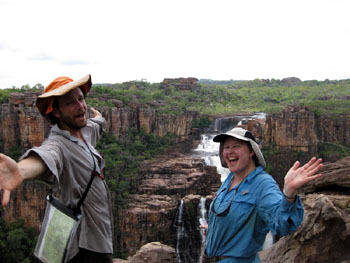
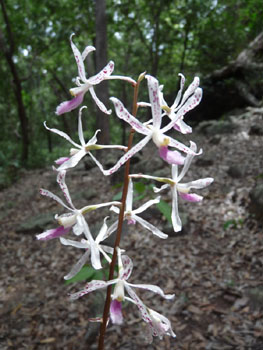
Your rewards are waterfalls, wildflowers and an incredible Kakadu wilderness experience no other operator can offer you.
This is a wet season trip. More information about bushwalking in the wet season
Kakadu Super circle no. 1 detailed trip notes.
For more information about this trip or to find out how to book email us for Kakadu Super Circle No. 1 Information
 share
share